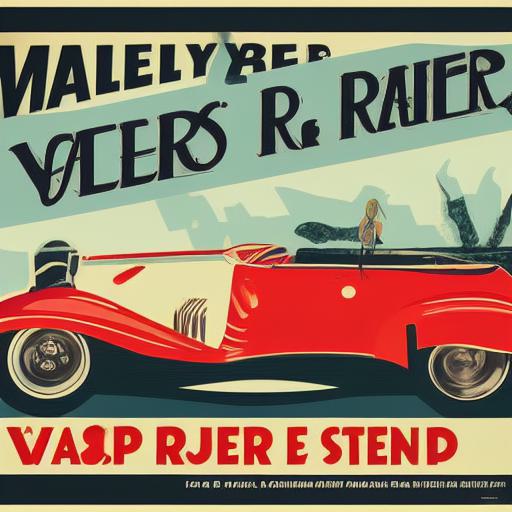Retro illustration art
Retro illustration refers to a style of illustration that is inspired by the design trends and aesthetics of the past. Typically, this style is characterized by a use of bold colors, simple shapes, and graphic elements such as stripes, dots, and geometric patterns.
The retro illustration style has its roots in the design movements of the 1920s and 1930s, such as Art Deco and Bauhaus. These movements emphasized clean lines, geometric shapes, and a streamlined, industrial aesthetic. In the 1950s and 1960s, the style evolved into a more playful and colorful form, often associated with advertising and popular culture.
Some common features of retro illustration include a limited color palette, bold typography, and a sense of nostalgia for the past. Many retro illustrations also incorporate humor or whimsy, and often feature stylized figures or animals.
The popularity of illustration art
Today, retro illustration remains popular in a variety of contexts, from branding and advertising to editorial and book design. It is often used to convey a sense of nostalgia or to evoke a specific time period or cultural moment. With its bold, graphic style and vibrant colors, retro illustration is a distinctive and eye-catching form of visual communication.
What is AI-generated art?
AI-generated art is a form of artistic expression that utilizes algorithms of artificial intelligence to quickly and efficiently produce images. Unlike traditional methods, it offers flexibility in terms of experimenting with various styles and techniques, and allows for the creation of designs that cater to specific needs. In addition, AI-generated art promotes inclusivity and diversity in the art industry by providing a platform for artists from diverse backgrounds to showcase their individual experiences and perspectives. To incorporate AI-generated art into their designs, designers can use online tools such as Visual Paradigm Online. Artists can also create their own AI-generated art by utilizing websites such as Stable Diffusion, Midjourney, or Dalle 2, and explore the vast range of creative possibilities offered by this technology.
How to create this prompt?
When writing an AI image prompt, it is essential to consider the key elements that make up the image. In the prompt above, the individual parts are carefully selected to influence the final image generated by the AI.
The prompt begins by specifying a vintage poster advertising an old car repair, which provides a clear direction for the overall theme of the image. This is further enhanced by the mention of a poster by Maurice Braun, which adds a specific artistic style to the prompt.
The use of the words “shutterstock” and “glossy old advertising poster” imply that the image should have a commercial look and feel to it. This could be achieved through the use of bold, eye-catching colors, and a high level of contrast to grab the viewer’s attention.
Finally, the term “conceptual art” adds a level of abstraction to the prompt, encouraging the AI to take a creative approach to the final image. This could involve the use of surreal or abstract elements to create a unique and memorable image.
In summary, a well-written AI image prompt should be specific and detailed, providing clear guidance on the key elements of the image. Each individual part of the prompt should be carefully selected to influence the final image generated by the AI. By considering factors such as theme, artistic style, color palette, and level of abstraction, it is possible to create a prompt that inspires the AI to create a truly unique and engaging piece of art.


